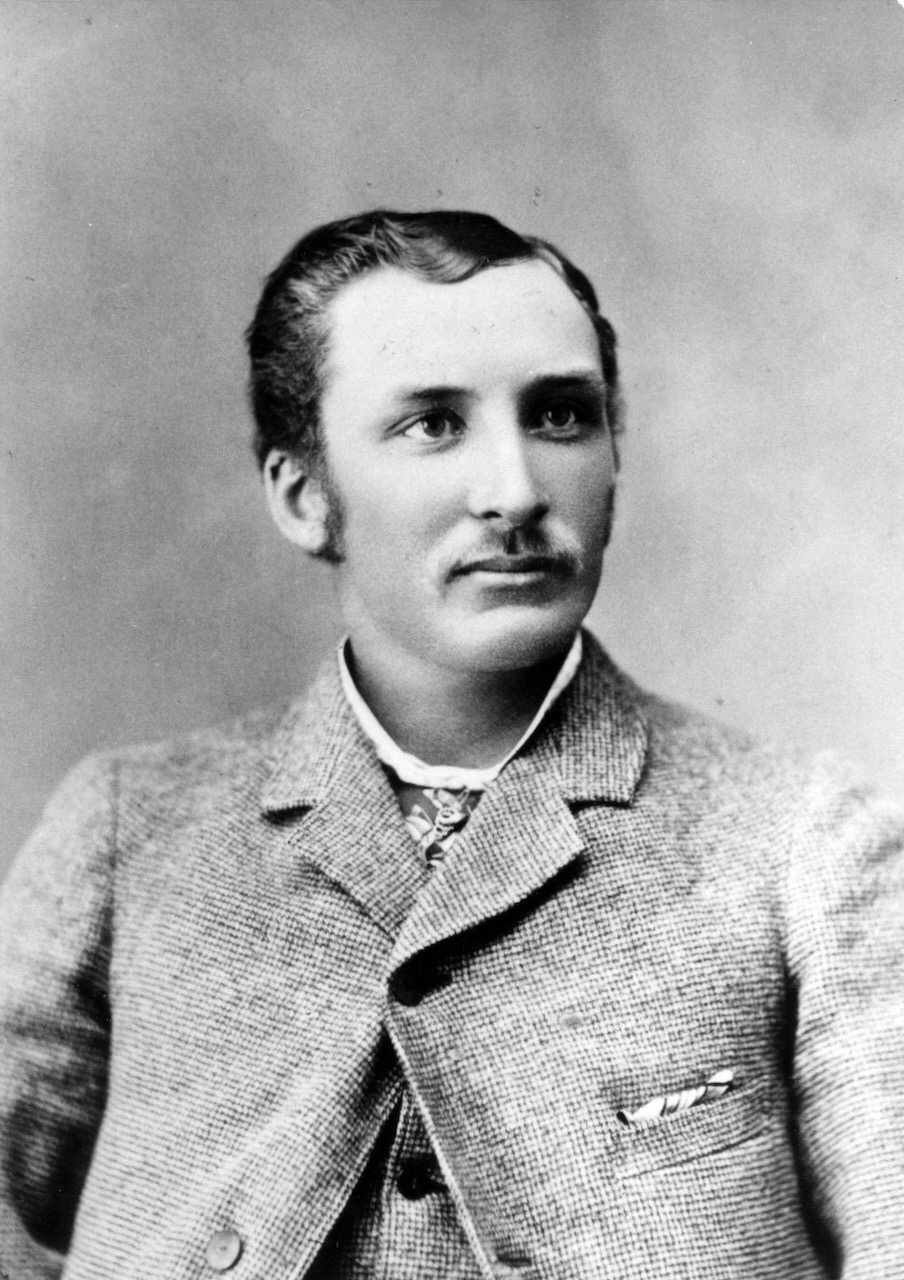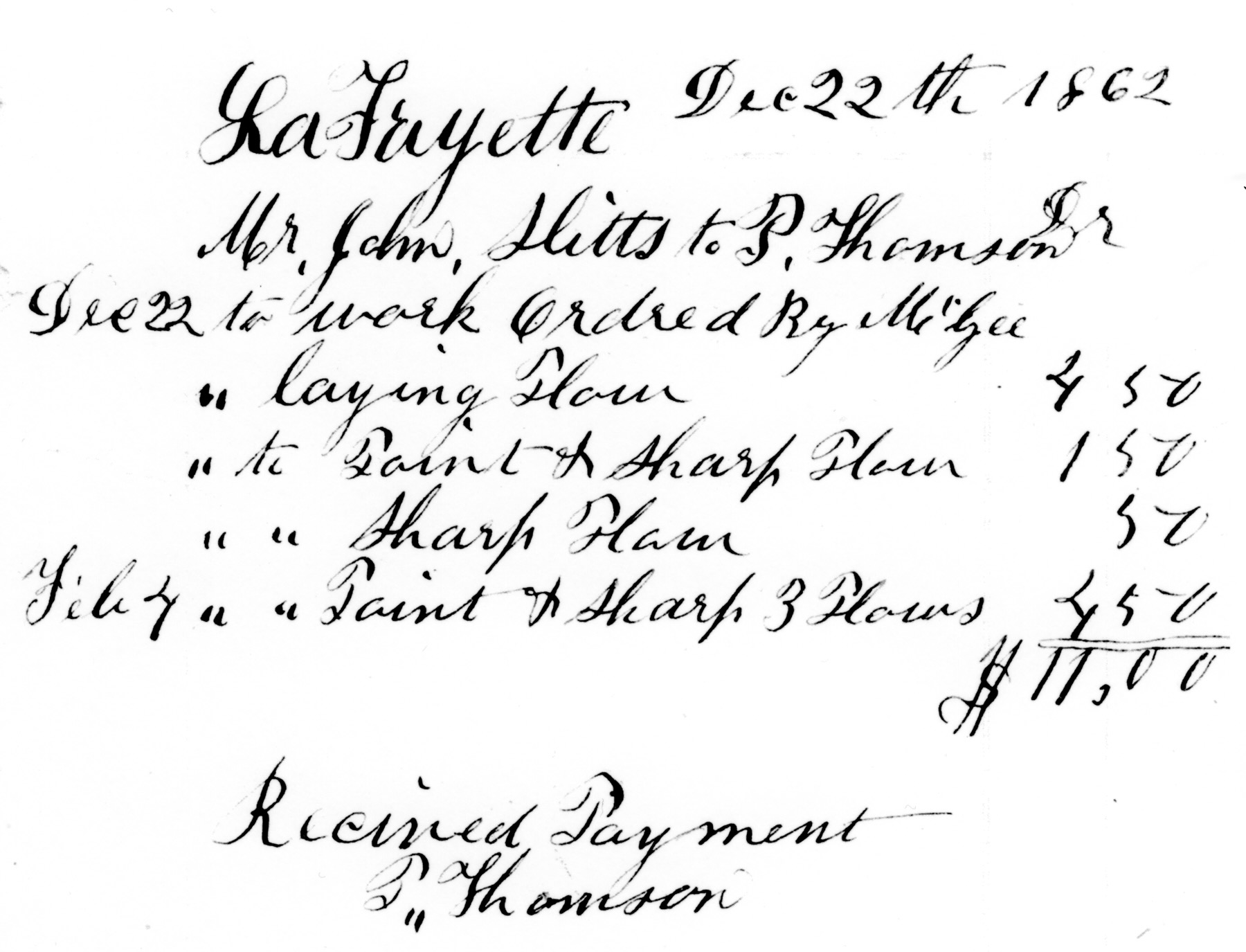In 1853 an eastern school teacher, Benjamin Shreve, who had failed to make his fortune in the gold fields and was en route home, was persuaded to stay in the growing hamlet and set up a school. After teaching for two years, he took over a roadside hotel-general store enterprise in the commercial area near the present Second Street and Golden Gate Way. In the early 1860’s, following the trend, he moved his business two blocks to the west.
Shreve applied for a post office for the community, first requesting the name of Centerville. When informed that such a post office already existed, Shreve suggested La Fayette, presumably after the French hero of the Revolution. The “La Fayette” spelling was used intermittently with “Lafayette” as late as the 1920’s. Shreve was the town’s first permanent postmaster…holding the job for 30 years.
(In 1854 hotel owner Milo Hough had been appointed postmaster of the area which was given the name Acelanus, a variation on the spelling of Acalanes. By 1855, when Hough moved his hostelry to Walnut Creek, this post office no longer existed and may never have been in operation).
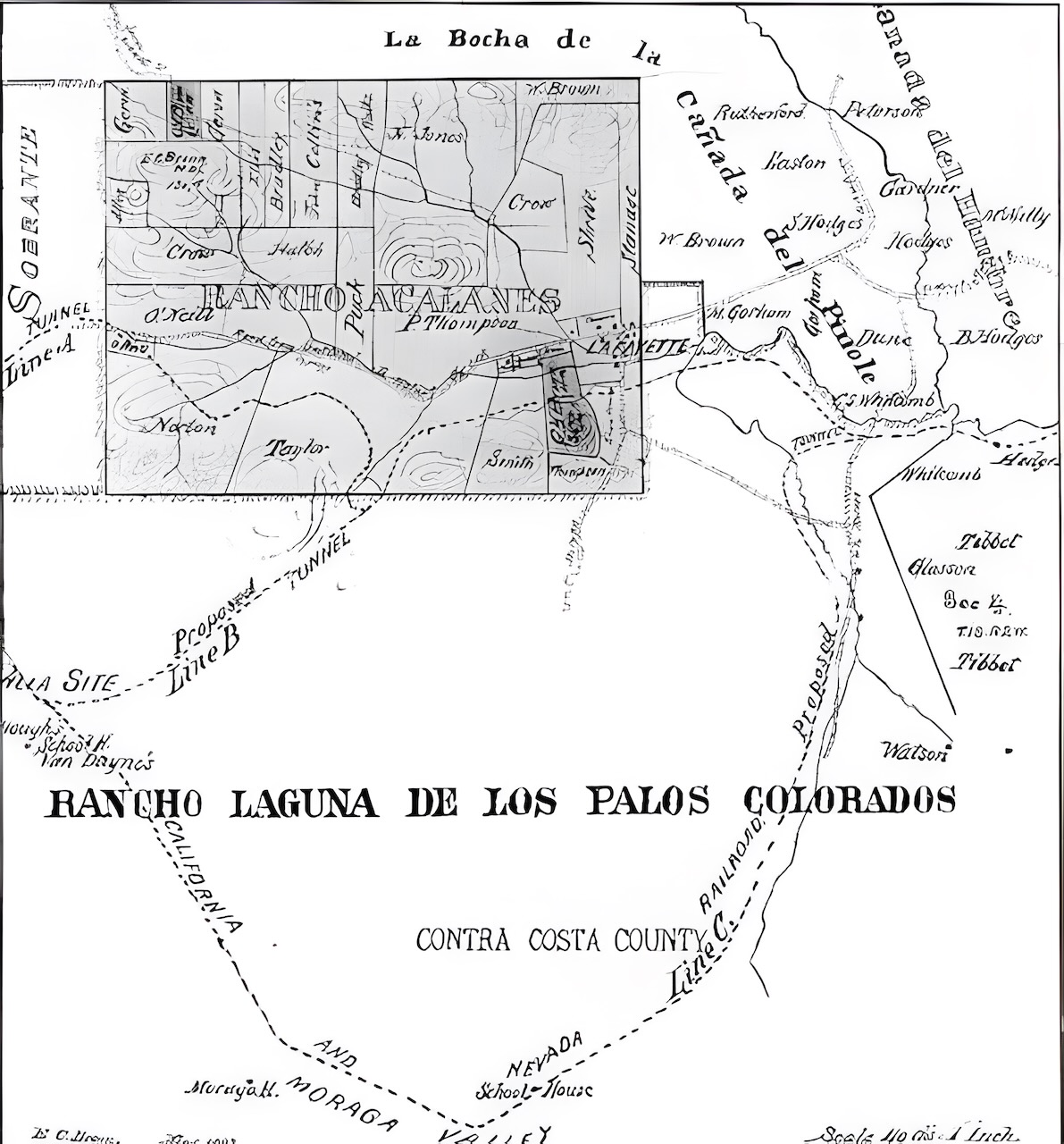
This 1893 map shows the beginning of the old Road from the Redwoods to Martinez (stretching below the word “Lafayette” and intersecting the newer Road from Oakland, then called Telegraph Road). The road to Briones Valley (Martinez) slices through the western part of the Acalanes grant.
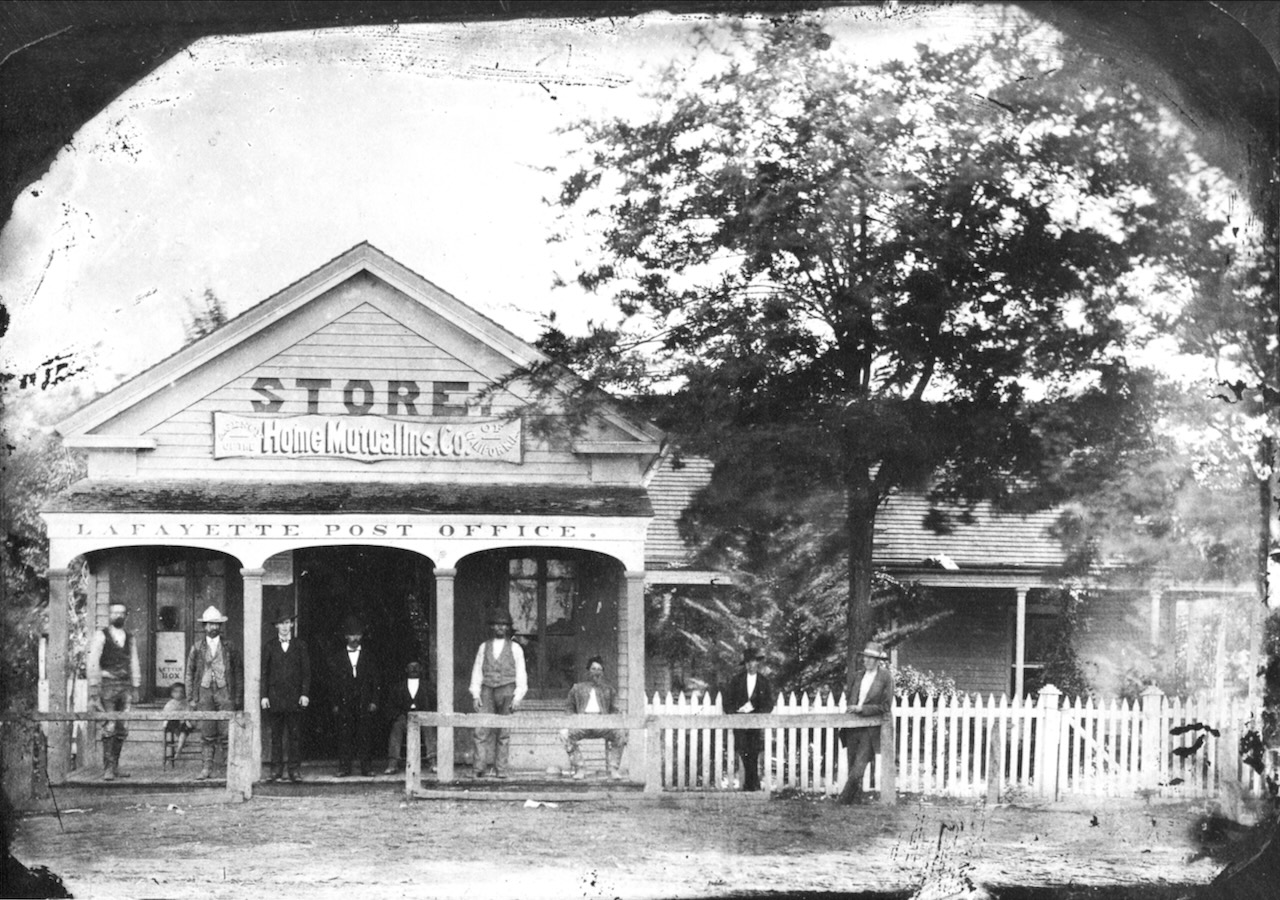
Reproduced from a tintype probably taken in the 1870’s, this picture of Benjamin Shreve’s store, post office, insurance agency–and the adjoining family home to the right– was a popular gathering place for local citizens. Much remodeled and with a false front added, the building remains at 3535 Plaza Way. Shreve opened the store in 1854, moving the enterprise to this location in the early 1860’s.
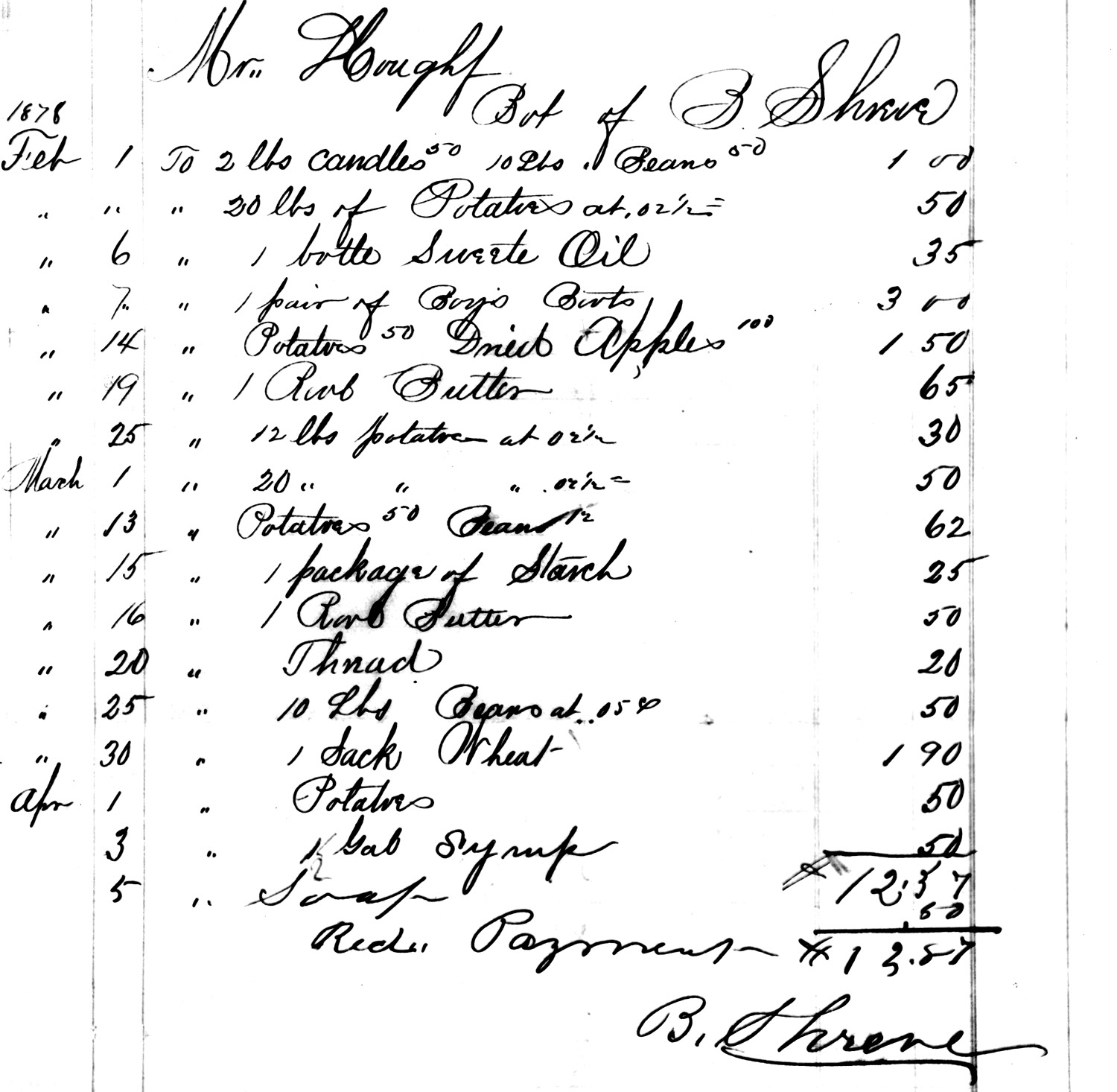
An 1878 bill of sale from Benjamin Shreve’s store is signed by Shreve and made out to a Mr. Houghf, probably an error in spelling the name “Hough.”
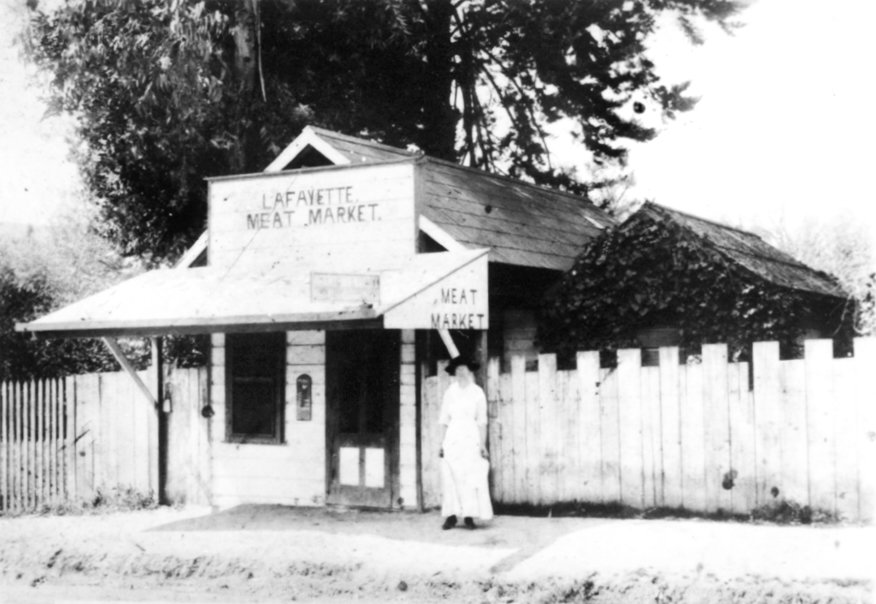
Mrs. May Daley Starks poses before the family-owned Lafayette Meat Market on Moraga Road opposite Plaza Way, circa 1915.
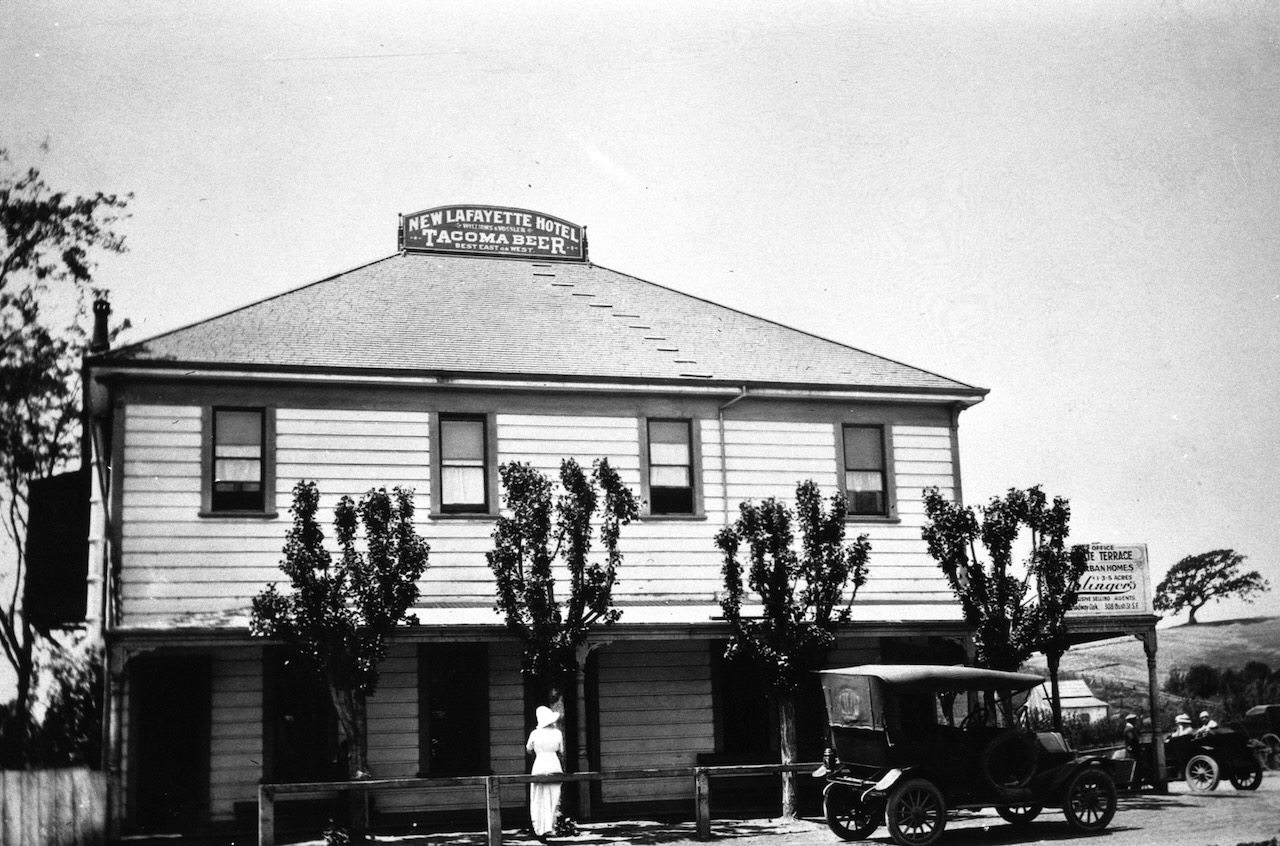
The hotel and refreshment business was one of the earliest commercial endeavors in Lafayette’s fledgling days. A convenient stopping place almost mid-way between the redwoods in Moraga and Martinez and later a rest for travelers from Oakland, Lafayette boasted a number of hotels and taverns.
One of the first hotels of any size was established in 1853 by Milo Hough at the old community center near Second and Golden Gate Way. Two years later Benjamin Shreve took over this establishment. After the town business center shifted to the west, the first of a number of hotels was built on what became known as Hotel Corner – today’s intersection of Mt. Diablo Boulevard and Moraga Road.
When the original structure was destroyed by fire, another hotel went up on the same corner in the late 1880’s. In 1892 this edifice, too, went up in flames – a fire reportedly set by a disgruntled patron who’d been refused “just one more drink” and tipped over a lantern.
Philip Lamp built the third hotel on this spot in 1900, but 29 years later this hostelry was also a victim of fire when the hotel’s French cook left a pan on the stove while he took a nap. There was a desperate but successful fight to save the business section on Plaza Way, thanks to a record trip to Lafayette by the Walnut Creek Fire Department and a plentiful supply of water scooped from a swimming hole in the creek.
This 1915 picture shows Lamp’s new Lafayette Hotel on Hotel Corner.
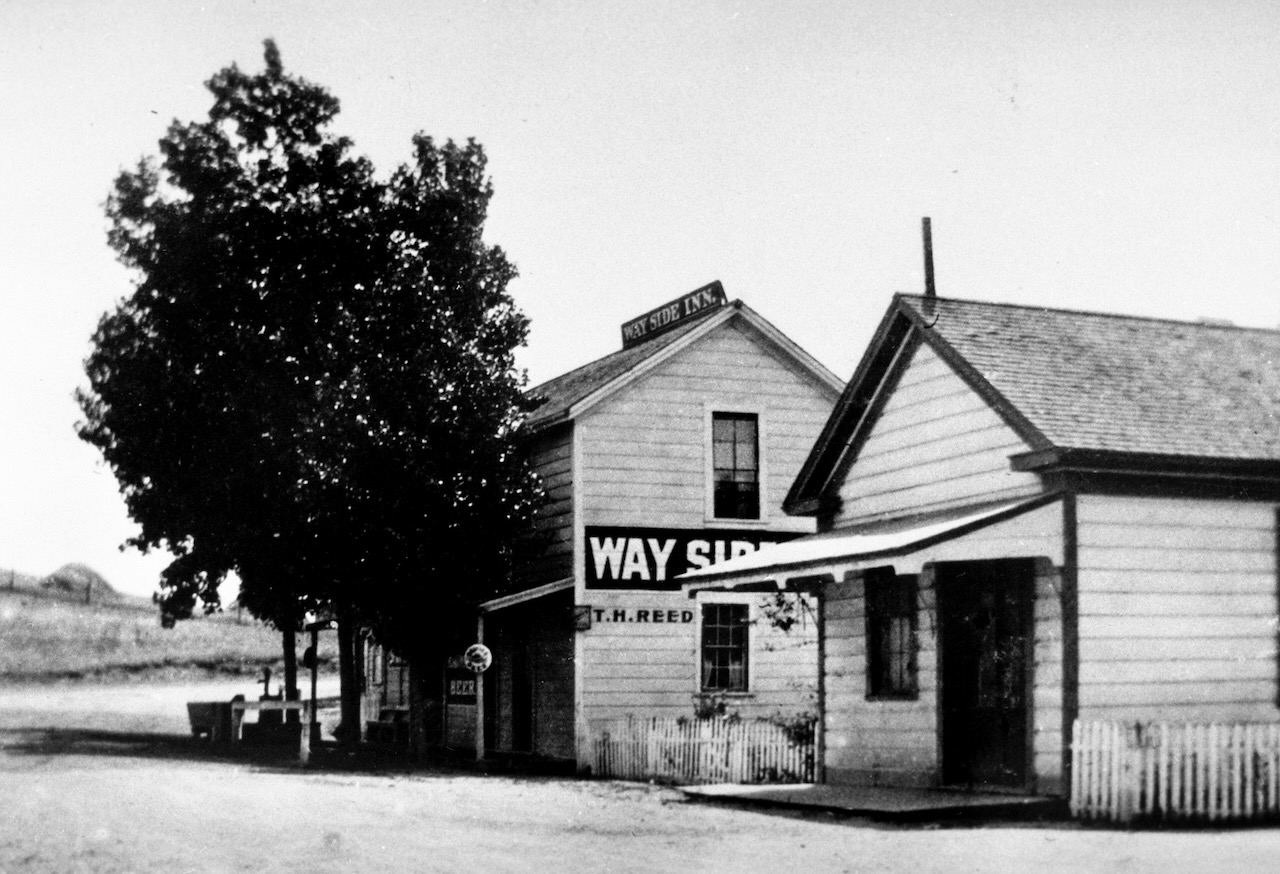
Two of Lafayette’s three remaining pioneer buildings appear in this 1910 photo. The Way Side Inn, erected in 1894 as a hotel and tavern by Edward J. Brady, is at 3521 Golden Gate Way. It has also served the community as a meat market, ice cream parlor, an insurance office, private home and antique shop.
To the right of the old inn is the Geils Building, located at 3531 Plaza Way and built in 1880 by Fred Geils. A tragic note in Lafayette’s human history is the story of Geils’s attempts to obtain land for a saloon from teetotaler “Grandfather Elam Brown” – only to die within days after achieving success. A local housewife, Emma Hough, related this saga of Geils in a series of letters sent to her husband, Orlando, beginning June 20, 1880: “Geils has got his saloon finished and furnished. Grandfather Brown would not sell him any land to put up a saloon on.” Mrs. Hough explains how Geils got around Squire Brown’s objections by adding: “He deceived Warren about it.” (Elam’s son, Warren, had bought the grist mill property and was selling off lots in 1874.)
Five days later Mrs. Hough wrote: “Mr. Geils is very bad off. He can’t live long (sic) he is trying to sell all the liquor he can while he does live.” The last comment on the incident was penned July 4: “Mr. Geils died suddenly last night about four o’clock.”
In later years the building has housed a number of businesses including a butcher shop, grocery, combination shoe repair-barber shop, restaurant and a clothing store.
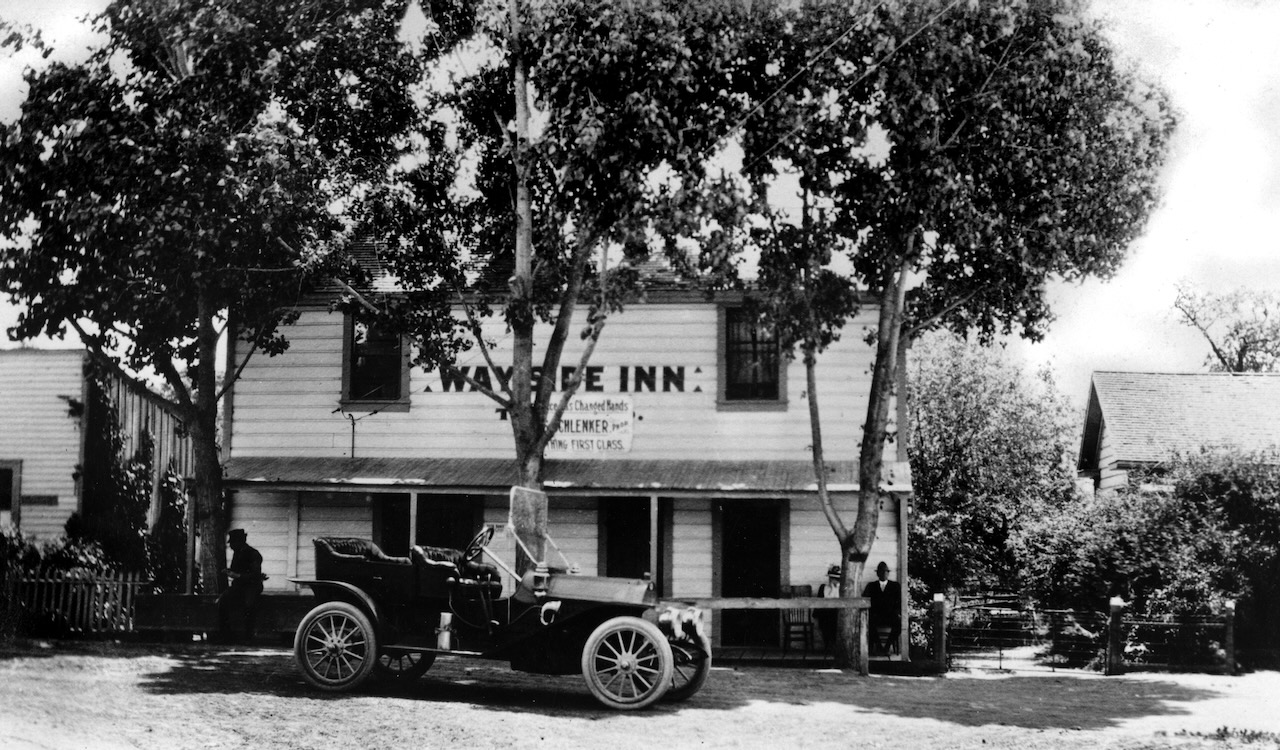
Another view of the Way Side Inn in later years. It was a popular refreshment stop and hotel for early motorists.
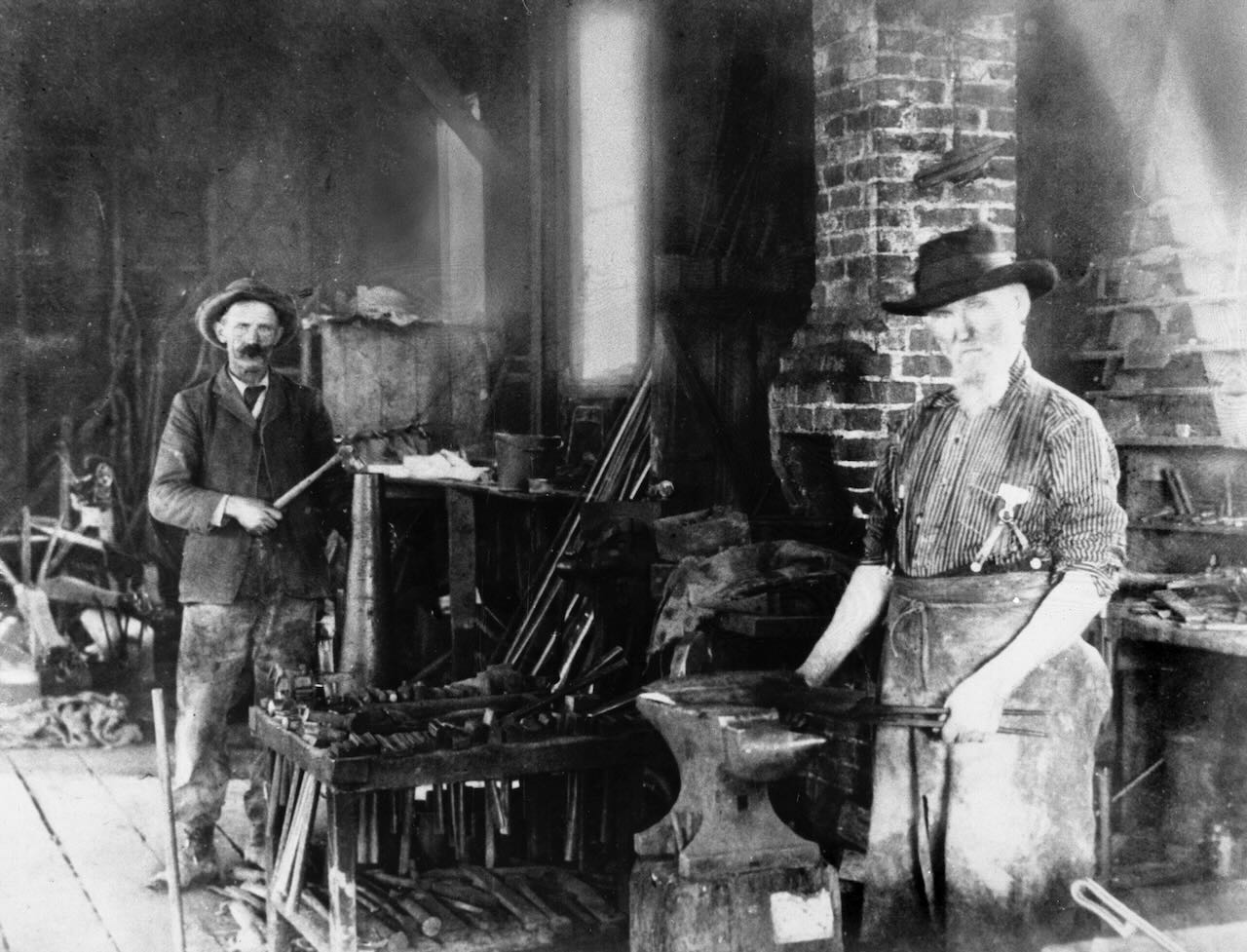
Lafayette’s earliest recorded blacksmith shop was founded by Jack Elson, probably in 1853. In August 1859 he hired Peter Thomson who had sailed from New York that spring. Within four years Thomson had bought the shop, which was in a grove of black walnut and locust trees on the northeast corner of modern Mt. Diablo Boulevard and Moraga Road. For the next 50 years Thomson was Lafayette’s blacksmith
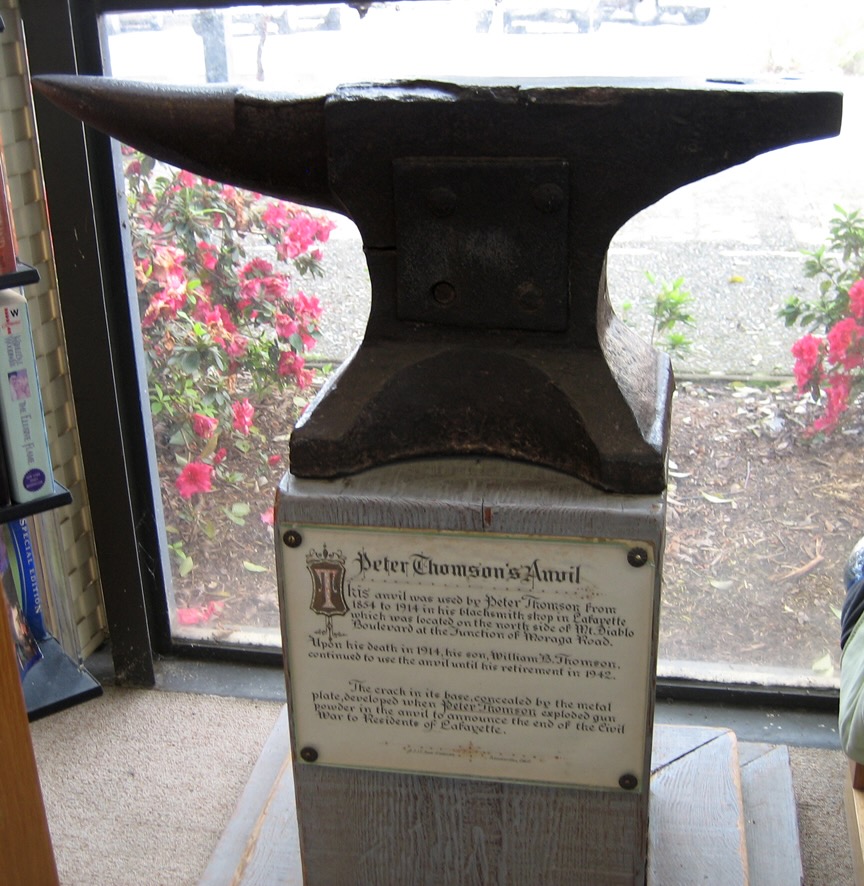
When the Civil War was over, the historic surrender announcement was made to local citizens by “touching off” Peter Thomson’s anvil. This was accomplished by loading the hole in the end of the anvil with powder and igniting it with a 25 foot rod which had been heated in the forge. Explosions cracked the anvil, and Thomson’s repairs to the tool, which is now displayed in the History Room, can still be seen. The anvil was also used to celebrate Fourth of July for many years. Wrote Emma Hough to her husband on July 9, 1876: “They shot the anvil off 4th July about 48 times.”
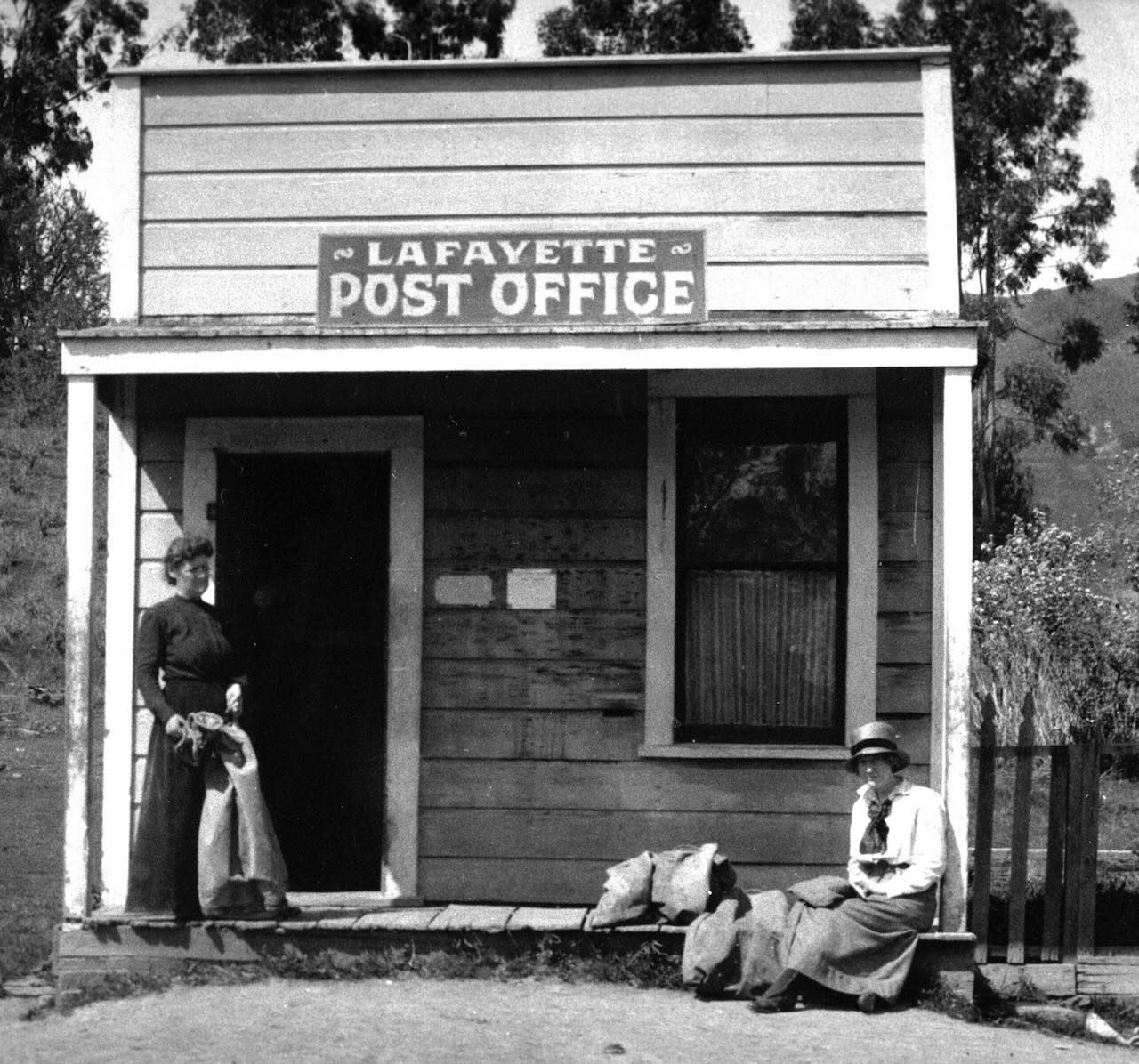
After Benjamin Shreve’s death, William A. Boardman became postmaster, followed by Carrie Hough Van Meter in 1904. Pictured here around 1912 with her daughter, Pearl, Mrs. Van Meter served as postmaster for 23 years at this location on the northwest side of the Mt. Diablo Boulevard-Moraga Road intersection. Mrs. Van Meter was also custodian of Lafayette’s early library. Originally founded in 1860 as a subscription library, the organization is believed to be the first public library service in the county. In 1913 the County Library was established, and in 1915 Mrs. Van Meter took charge of the 60 books in the local “branch” which was in a corner of this post office. She continued as librarian until 1947.
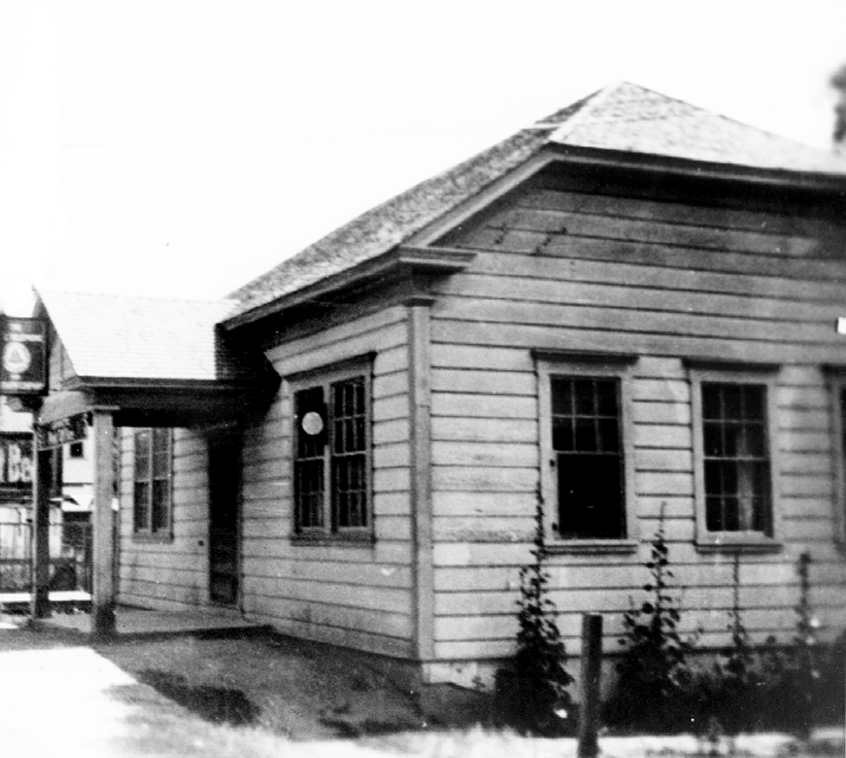
In 1927, the Lafayette Improvement Club bought the old Lafayette School building, moved it from Moraga Road to Mt. Diablo Boulevard and set up a combination post office-library and telephone company office. In a series of changes, the library went from this location to Town Hall to a small building on the same property where the present library on Moraga Road was built in 1961. Compare the building in this 1936 photo with the second school and note the structure has been turned sideways and the ends of the roof line cut off. The building still stands at 3535 Mt. Diablo Boulevard, although almost unrecognizable as a result of additional, extensive remodeling.
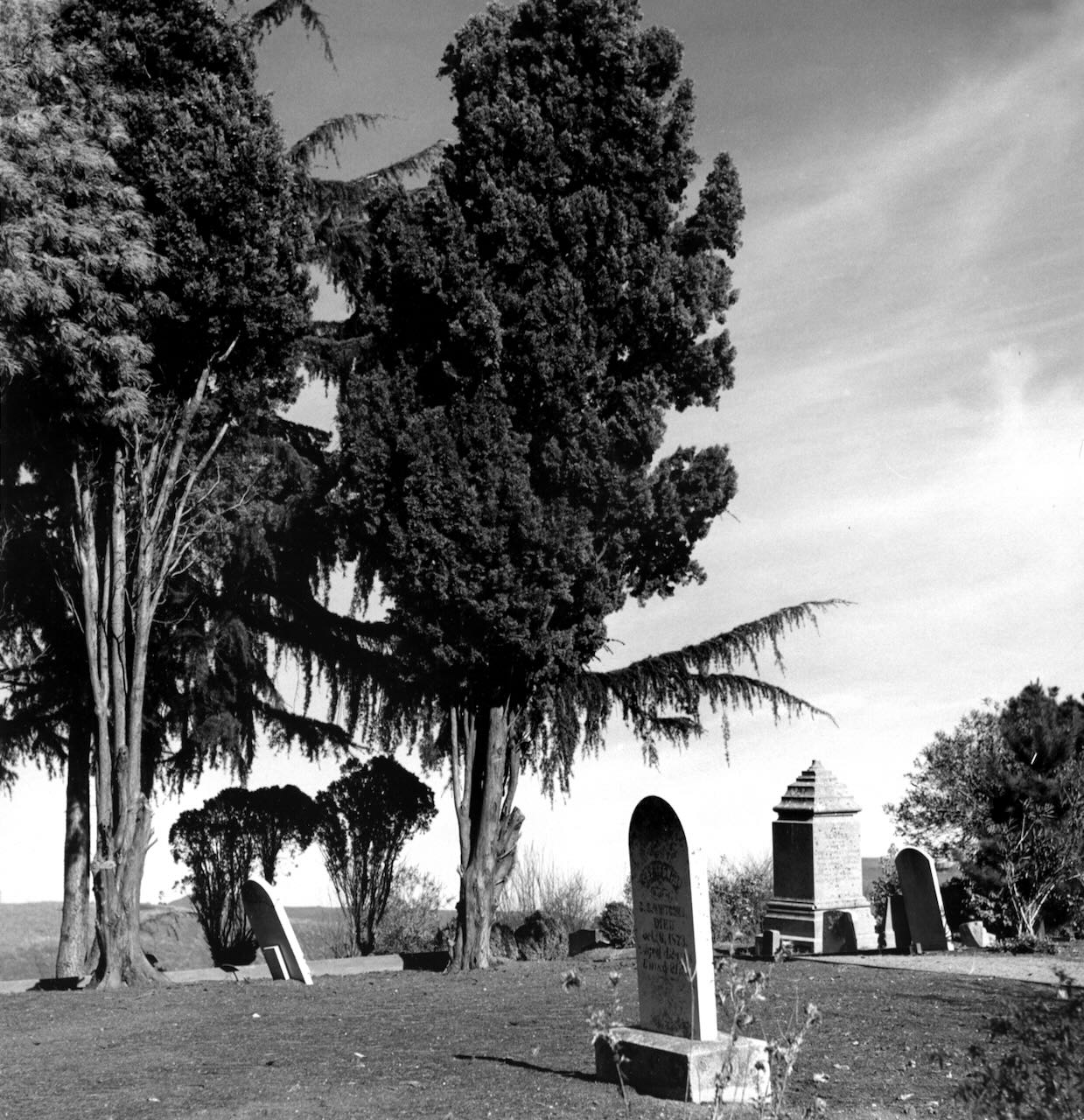
Lafayette’s cemetery was established on 4-1/2 acres of hillside property owned by Medford Gorham. In 1874, he sold the property for $100 to the Cemetery Corporation which was chaired by Elam Brown. The Corporation fenced the property and located the roads as they presently exist. The original Death and Burial Record Book, still on file in the cemetery caretaker’s building, shows names of the deceased, date and cause of death, plus age and place of death. A complete copy of the book is in the Lafayette Historical Society files. In 1937, the Alamo-Lafayette Cemetery District was formed with county taxation to ensure perpetual care. Although many of Lafayette’s pioneers are buried in this quiet spot at the eastern end of Mt. Diablo Boulevard near Pleasant Hill Road, the graves of Elam and Margaret Brown are in the Martinez Cemetery.
